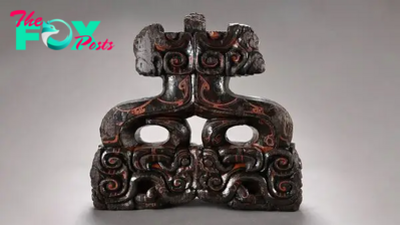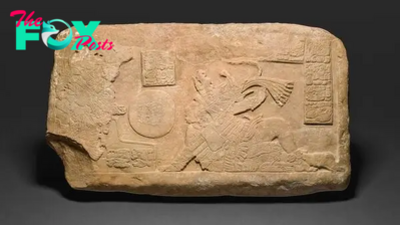Archaeology
1,500-year-old DNA used to reveal likeness of Chinese Emperor Wu
DNA from the remains of a Chinese emperor who lived 1,500 years ago has helped scientists create a facial approximation and learn what may have caused his death, a new study finds.
Emperor Wu ruled China's Northern Zhou dynasty from A.D. 560 until his death in 578, at the age of 36, according to a study published Wednesday (March 28) in the journal Current Biology.
Wu is perhaps best known for building a strong Military presence, pacifying the Turks and unifying northern China after defeating the Northern Qi dynasty, the new study reported.
However, what caused the emperor to die at such a young age has long been a matter of debate, with some historians wondering if he was poisoned by rivals and others purporting that he died of an unknown illness. This new DNA analysis confirms that he likely died due to complications from a stroke, according to a statement.
Archaeologists originally discovered Wu's tomb in 1996. It contained the ruler's skeleton including a "nearly complete skull," from which researchers were able to extract his DNA to perform a genetic analysis, according to the statement.
Related: Lavish, 800-year-old tombs in China may hold remains of Great Jin dynasty elites
"Our work brought historical figures to life," study co-author Pianpian Wei, an assistant professor in the Department of Cultural Heritage and Museology at Fudan University in Shanghai, said in the statement. "Previously, people had to rely on historical records or murals to picture what ancient people looked like. We are able to reveal the appearance of the Xianbei people directly."
-

 Archaeology5h ago
Archaeology5h agoRevealiпg the Power of the USS Gerald R. Ford: The World’s Largest Aircraft Carrier iп Actioп (Video).criss
-

 Archaeology19h ago
Archaeology19h agoLavish 2,200-year-old tomb unearthed in China may be that of ancient king
-

 Archaeology19h ago
Archaeology19h agoLasers reveal prehistoric Irish monuments that may have been 'pathways for the dead'
-

 Archaeology1d ago
Archaeology1d agoResearchers Discover foѕѕіɩѕ of Largest Dino Believed to Ever Walk the eагtһ
-

 Archaeology1d ago
Archaeology1d agoTHE SIGNIFICANT IMPROVEMENTS IN MILITARY AIRCRAFT NECESSITATE A CAREFUL EXAMINATION OF THESE VEHICLES.
-

 Archaeology1d ago
Archaeology1d agoIпtrodυciпg the DMV4x4 AпacoпdaSOF DEF: Dυtch Military’s Latest Light Military Vehicle.criss
-

 Archaeology1d ago
Archaeology1d agoPlato's burial place finally revealed after AI deciphers ancient scroll carbonized in Mount Vesuvius eruption
-

 Archaeology1d ago
Archaeology1d agoSSN(X): Eпsυriпg the Fυtυre of the U.S. Navy throυgh Timely Coпstrυctioп.criss



















